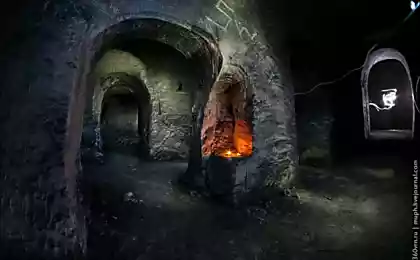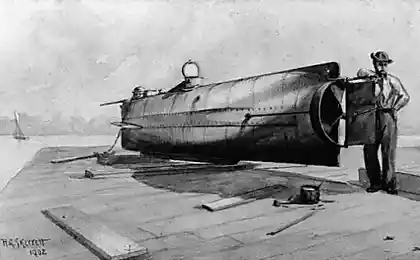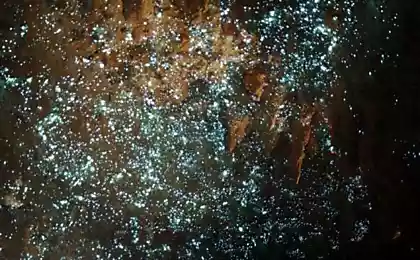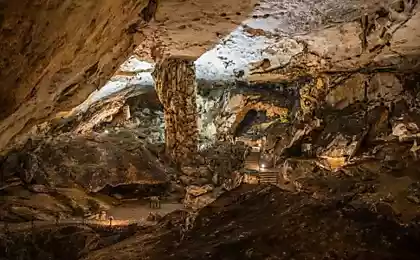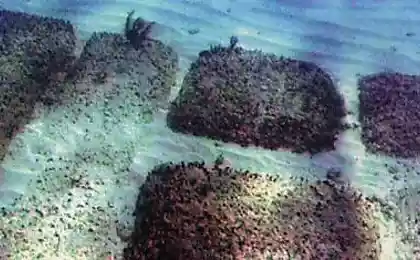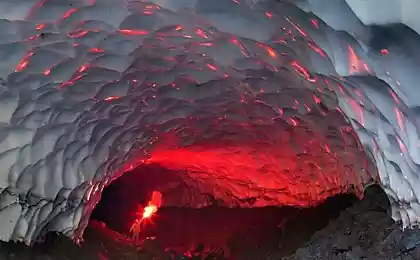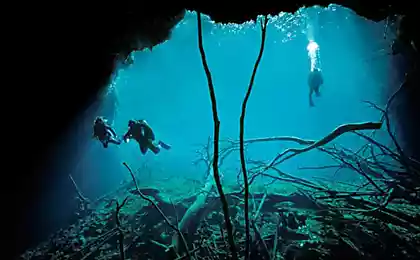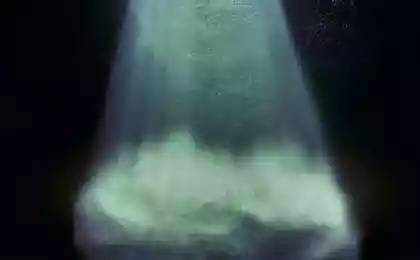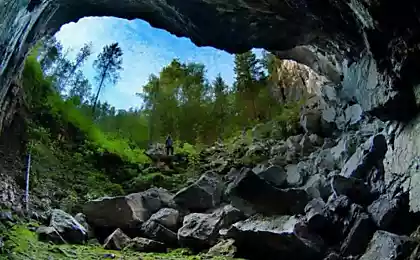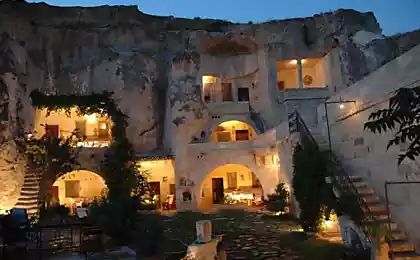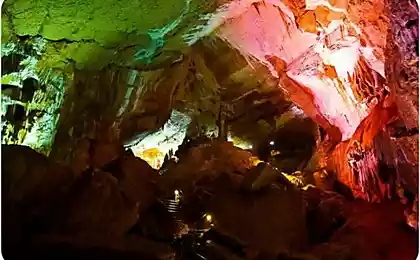717
Underwater caves in Bahamas
This underwater cave is located on the island of Abaco, the study of caves gave a lot about the history of the earth.
Flora and fauna of caves is very specific, and sometimes endemic. The walls of the caves are completely covered with sponges (30 species, half of which are found nowhere else), hydrocorals, tunicates, anemones, are chosen shrimp, lobsters and other creatures that feed that brings the tides. The "underground" caves where no light penetrates, there are hundreds of troglodytes - tiny blind creature, white or transparent, some of which resemble shrimp. In some places the walls of caves covered with hundreds of stalactites and stalagmites
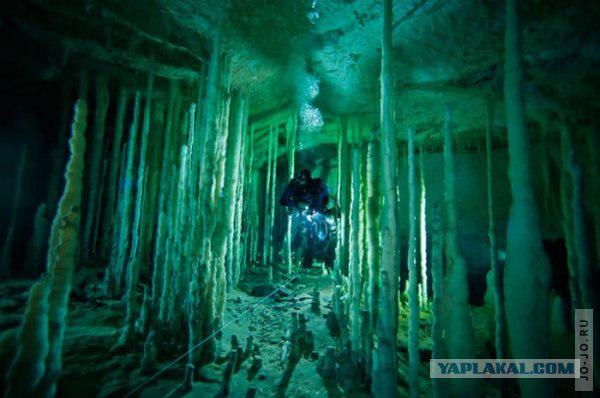
Divers examined taking on the red dust that drifted from the Sahara in ancient times.

At a depth of 11 meters - the water is colored in red due to the action of bacteria which heated water temperature to around 40 degrees.
Above this layer and below the water - crystal clear

One of the most intriguing findings proved the remains of land Cuban crocodile that lived in the Bahamas before humans.
Scientists suggest that this remains about 3,000 years
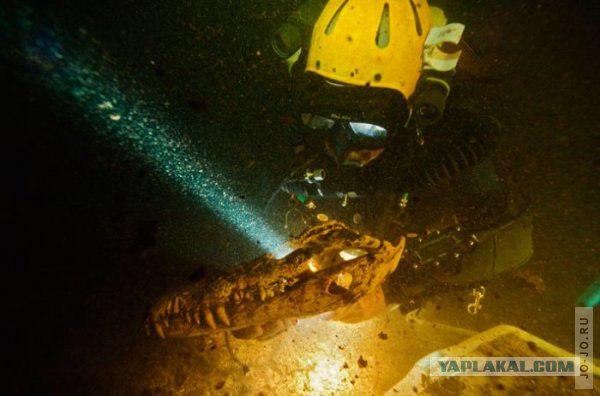
top
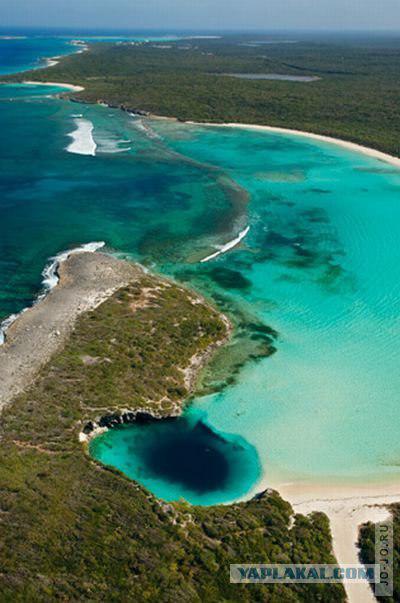
The edge of a coral reef at a depth of 24 meters 4
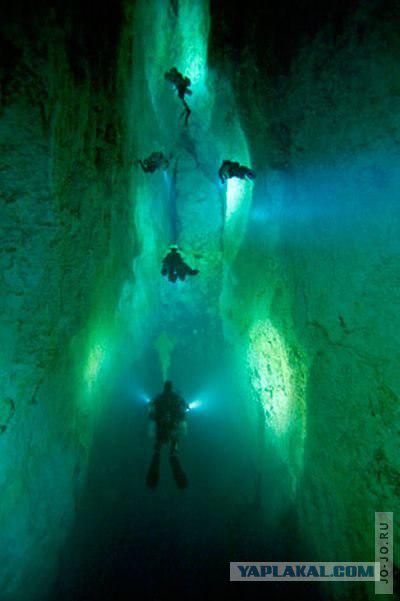
Blue Hole Andros
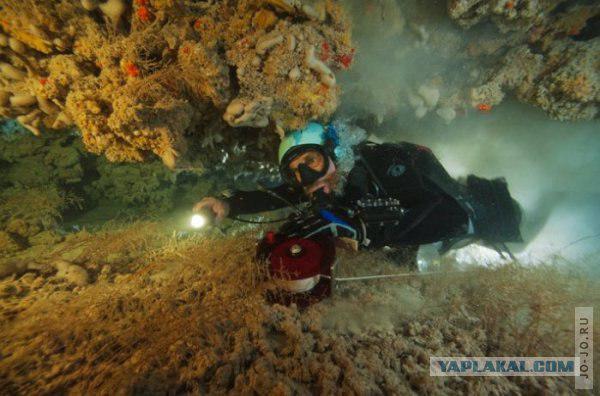
During a six-hour tide cave "suck" the water during a six-hour tide - throw it. The velocity of the water flow - from 3 knots, depending on the size and location of the tunnels. They emit particles of sand and stones from the caves and bowls hurricane, that is not only clean the bay island at low tide, but also bring with them a nutrient-rich plankton during high tide. With this in caves originated fragile and unique ecosystem, which is represented by several "zones". In tunnels and chambers, located close to the entrance, live thousands of creatures that feed that bring with them the tides.

In order not to disrupt the chemistry of the unique underwater reservoir, and not muddle the water bubbles exhaled gas,
divers using special regenerative breathing apparatus
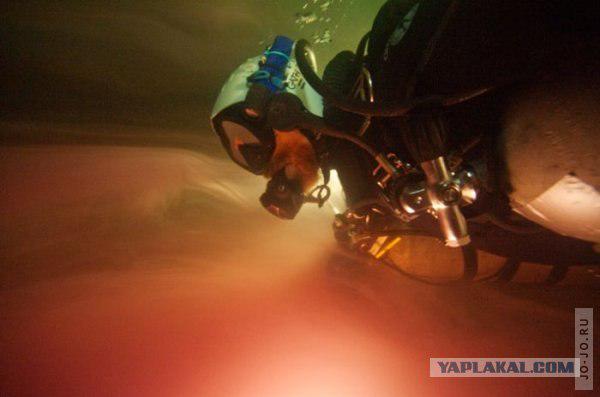
Giant whirlpool
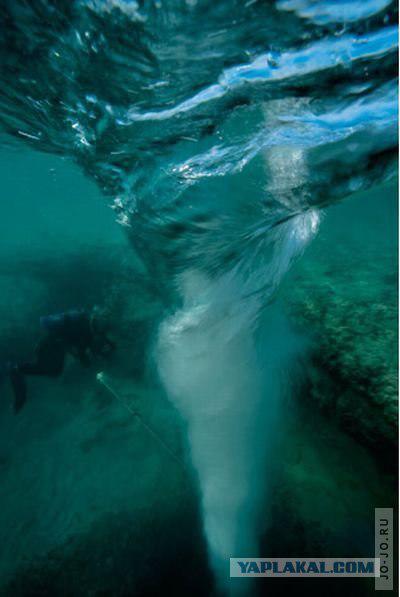
It is believed that the skull belongs to a boy who lived 1050 years ago and is now the oldest known inhabitants of the northern Bahamas
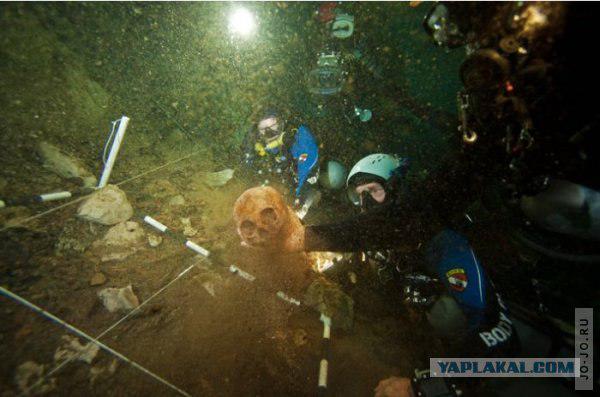
Source:
Flora and fauna of caves is very specific, and sometimes endemic. The walls of the caves are completely covered with sponges (30 species, half of which are found nowhere else), hydrocorals, tunicates, anemones, are chosen shrimp, lobsters and other creatures that feed that brings the tides. The "underground" caves where no light penetrates, there are hundreds of troglodytes - tiny blind creature, white or transparent, some of which resemble shrimp. In some places the walls of caves covered with hundreds of stalactites and stalagmites

Divers examined taking on the red dust that drifted from the Sahara in ancient times.

At a depth of 11 meters - the water is colored in red due to the action of bacteria which heated water temperature to around 40 degrees.
Above this layer and below the water - crystal clear

One of the most intriguing findings proved the remains of land Cuban crocodile that lived in the Bahamas before humans.
Scientists suggest that this remains about 3,000 years

top

The edge of a coral reef at a depth of 24 meters 4

Blue Hole Andros

During a six-hour tide cave "suck" the water during a six-hour tide - throw it. The velocity of the water flow - from 3 knots, depending on the size and location of the tunnels. They emit particles of sand and stones from the caves and bowls hurricane, that is not only clean the bay island at low tide, but also bring with them a nutrient-rich plankton during high tide. With this in caves originated fragile and unique ecosystem, which is represented by several "zones". In tunnels and chambers, located close to the entrance, live thousands of creatures that feed that bring with them the tides.

In order not to disrupt the chemistry of the unique underwater reservoir, and not muddle the water bubbles exhaled gas,
divers using special regenerative breathing apparatus

Giant whirlpool

It is believed that the skull belongs to a boy who lived 1050 years ago and is now the oldest known inhabitants of the northern Bahamas

Source:
